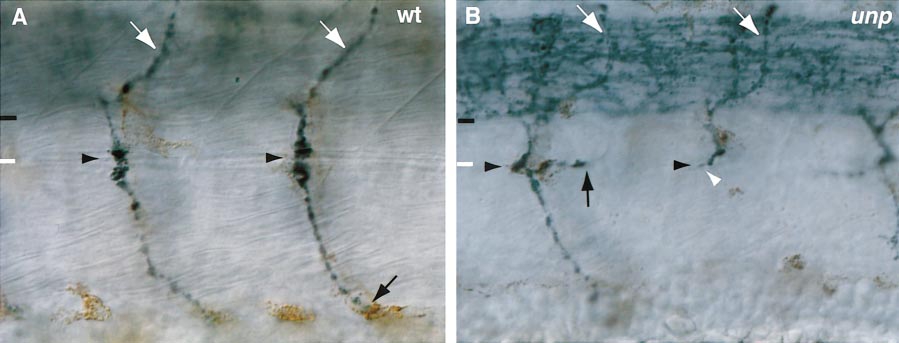Fig. 4 unplugged mutant embryos display specific motor axon defects at the choice point. Lateral views of 27-hpf wild-type (A) and unplugged mutant (B) embryos stained with znp-1 antibody. The common path extends between the lower end of the spinal cord (black line) and the horizontal myoseptum (white line). (A) In wild-type embryos, CaP axons (black arrow) and MiP axons (white arrow) have completed migration on the common path and extend on their cell-type specific trajectories. (B) In unplugged mutant embryos, MiP trajectories are unaffected (white arrows). In contrast, presumptive RoP and CaP motor neurons display two classes of axonal phenotypes at the choice point (black arrowhead). Mutant motor axons stalled at the choice point instead of extending further into the ventral myotome (stall phenotype, white arrowhead), or they extended into the ventral myotome but formed ectopic branches at the choice point (branching phenotype, black arrow).
Reprinted from Developmental Biology, 240(2), Zhang, J., Malayaman, S., Davis, C., and Granato, M., A dual role for the zebrafish unplugged gene in motor axon pathfinding and pharyngeal development, 560-573, Copyright (2001) with permission from Elsevier. Full text @ Dev. Biol.

